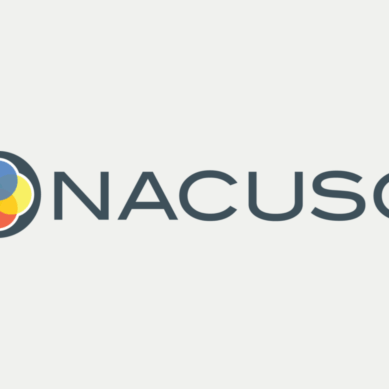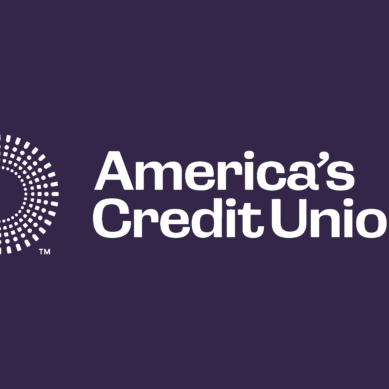The payments space is an ever-evolving field that’s quick to adopt new technologies. It is also the area where credit union members will most expect to see new technologies integrated as they hit the market in order to assist in rapid payments processing and provide increased options.
However, as these technologies are integrated and members are able to move money faster and more freely through a wider variety of systems and rails, these conveniences are also quick to be weaponized against members by bad actors. It’s no wonder then that credit unions often feel a sense of trepidation when considering which payment methods to allow, which technologies to integrate into their systems, and which partner to work with to accomplish it.
Despite the risks, credit unions should avoid letting the fear of fraud keep them from embracing new technologies, but should instead proceed with caution, strong member education and cybersecurity programs, and—perhaps most essentially—technology vendors and partners they can trust. With the right tools and teams, credit unions can offer their members the conveniences they demand while simultaneously protecting them from the lurking dangers within.
Meet Amanda Crocker of SWIVEL
Amanda Crocker, President of SWIVEL, a payments software company with a focus on compliance and security, can be called nothing short of a payments expert. A hands-on creative, Crocker boasts a resume that includes working with technology at Microsoft and building up Facebook’s global payments ecosystem, even working to create their Marketplace.

Amanda Crocker
Now, as President of SWIVEL, Crocker combines her knowledge in payments and technology to support credit unions in adapting the payment solutions they need without compromising safety and soundness. Crocker knows how critical it is to find a balance between those two, but also how steep a challenge that can be for many financial institutions that seek to provide their members with all the services they want, while also combating the new threats that often accompany these services.
To help our credit union readers succeed in this space, CUSO Magazine sat down with Crocker to delve into the payments world at present, the increasing role of AI, and the ever-changing face of fraud.
“A new dawn” for digital strategies
The payments space at present, particularly for credit unions, is on the precipice of great change, according to Crocker, as a growing number of credit unions begin to recognize the need for robust payments offerings demanded by younger generations and the digital strategy to back it up. This is essential, as nowadays, members expect fast and seamless payment transactions—whether it be through apps such as Venmo or systems like Zelle—along with digital payment solutions to accompany those products, such as digital wallets.
“There’s this new dawn happening, where credit unions are really thinking about their digital strategy in a way that has never really taken place before, and thinking, ‘How can we compete? How can we focus on the younger generation with our deposits and our accounts?'” says Crocker. “Younger generations are looking for digital strategy, whether that’s ease, digital wallets, or being able to open an account in two or three clicks rather than having to go into the credit union or send a check in for your deposit. They’re looking for AI to be driven into the system in a way that creates easier ways of communication. So, credit unions looking for technology that brings all of these together, adding some of these new strategies, and pushing the boundary, is a great thing.”
A great thing, indeed, as these digital experiences can make or break a member’s relationship with the credit union. The Financial Brand reports that seeking out better digital systems is the number one reason why consumers switch financial institutions. Therefore, it’s critical that credit unions examine new technologies as they arise and explore how they can bring member benefits.
So, what are those new technologies that credit unions should be taking on in the payments space? Digital wallets are key, but Crocker stresses that credit unions also need to start sending on instant payments instead of just receiving, as well as thinking beyond text message reminders, and going into spaces such as Buy Now, Pay Later. Oh, and of course, there is AI to consider.
AI as an asset and a threat
When it comes to payments, AI is both a problem and a solution—a sword and a shield. As with most fields, there are instances where AI applications can be a great asset and support. In payments, AI has numerous potential areas it can assist, create a better member experience, and bolster the credit union’s security. According to Crocker, along with risk and fraud decisioning, one of AI’s biggest tools right now for credit unions is the ability to know what solution to offer the member at what point in time, in order to provide a more personalized experience.
“This is where AI is going to get really smart, really fast, in terms of offering the right communication at the right time,” says Crocker. “Whether that is offering a new product, giving notifications around due dates to help keep delinquencies down—especially in this environment—or even a reminder for members such as, ‘You just bought a vehicle, but we don’t see that you have insurance,’ it is going to be able to meet that member where they are with what they need.”
But just as AI is being used by financial institutions and their partners to improve digital systems and strengthen security, it’s also being used by scammers and bad actors in order to weaken those defenses. It’s cropping up around account takeover fraud, targeted phishing, and even moving over to social scams—a huge leap for the technology, as well as a huge concern.
“AI is absolutely the biggest target. The fact that it’s shifting into text message scams, voice scams, social scams, and calling scams—mimicking credit union agents to take over people’s accounts—is worrying. AI has moved beyond just making the decisions to actual human interaction, and that is something that we always have to watch out for.”
With money moving more easily and AI capable of passing as human in certain instances (romance scams, phone scams, text scams, etc.), it is able to create more believable scenarios for people to fall prey to through methods many members are not yet aware of. In that sense, the ability to move money quickly and seamlessly is a double-edged sword that credit unions need to be prepared for.
Finding the right partner and approach
The key, then, to achieving that balance between bringing on new technology while also mitigating fraud risk, is ensuring your credit union is seeking out the right partners for the right integrations at the right time.
“Credit unions need to really consider who they are partnering with. There will be some vendors that let credit unions charge whatever they want, wherever they want, have any limit that they want, or let any payment go through. But that’s not a good thing,” Crocker warns. “Instead, credit unions need to be asking questions such as ‘What is your expertise? How do you keep me safe? What type of fraud do you mitigate? How do you help me understand?’ They need to look at their technology providers as trusted partners.”
Credit unions must be confident that each vendor they work with is able to provide ample security measures in addition to the credit union’s own cybersecurity. Or better yet, Crocker advises credit unions to take a holistic approach to their payments integrations and work with one partner that can bring the technologies they’re hoping for together in a protected environment, instead of finding a different vendor for each individual integration.
“Don’t take on every FinTech,” says Crocker. “Focus on the right partnership at the right time, building products together so you don’t throw the baby out with the bathwater.”
Partners that have a view of the financial landscape as a whole also provide an added benefit for credit unions, Crocker notes. Especially with credit unions, where resources are limited, having that extra layer and trusted partner who’s looking across the credit union industry and the ecosystem as a whole—not just in your space—will be a great advantage. Take fraud, for example. Fraudsters typically attack three to four different credit unions at the same time. By viewing the entire landscape at once, partners such as SWIVEL are able to see these attacks and warn credit unions before they get out of hand.
In the end, the perfect (and trusted) partner can make all the difference.
The best time was yesterday, the second-best time is today
Members can and will expect the most from their financial institutions, particularly in the payments world. Digital wallets, AI integration, and seamless transactions will soon be table stakes for younger generations—if they aren’t already.
For credit unions, meeting these needs and expectations requires pushing boundaries, leaning into new technologies, and creating a sound digital strategy. While the burden of compliance and the risk of fraud can be a deterrent to many, credit unions should continue to venture forth, but with caution, ensuring the integration of these technologies is done carefully and with a trusted technology partner.






















































